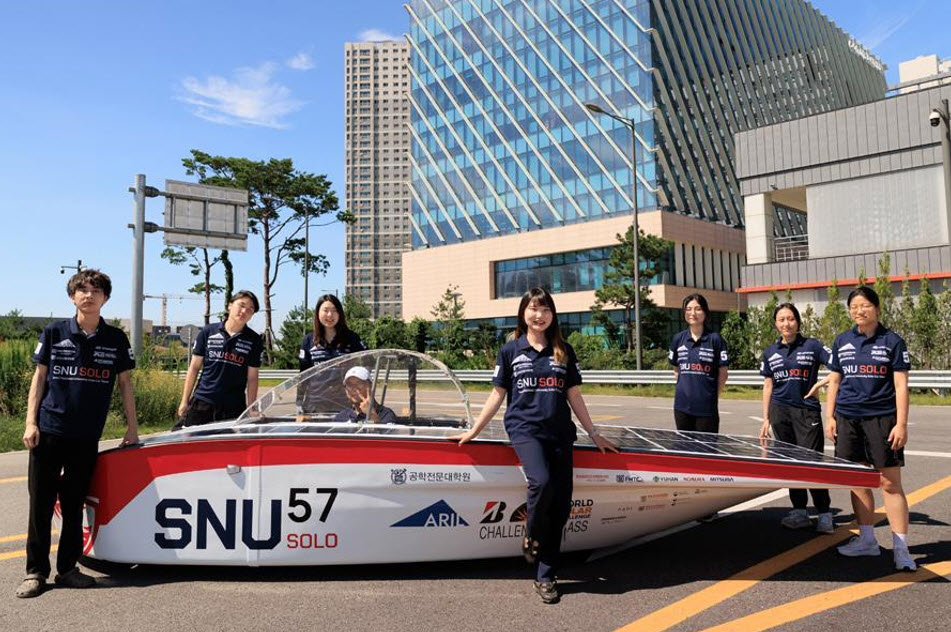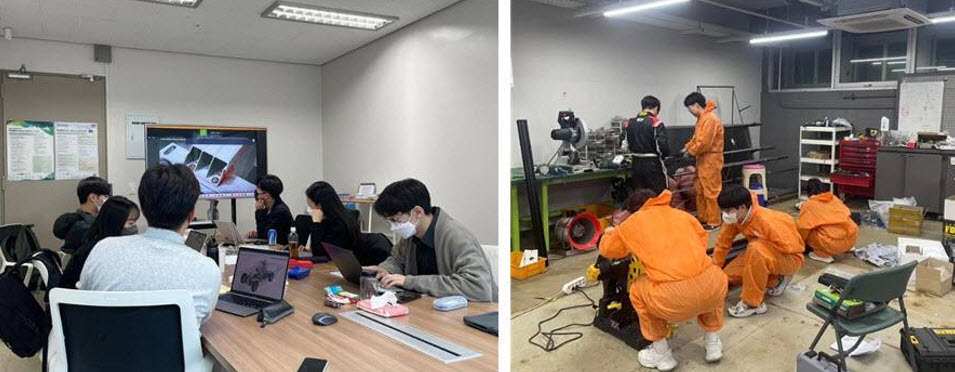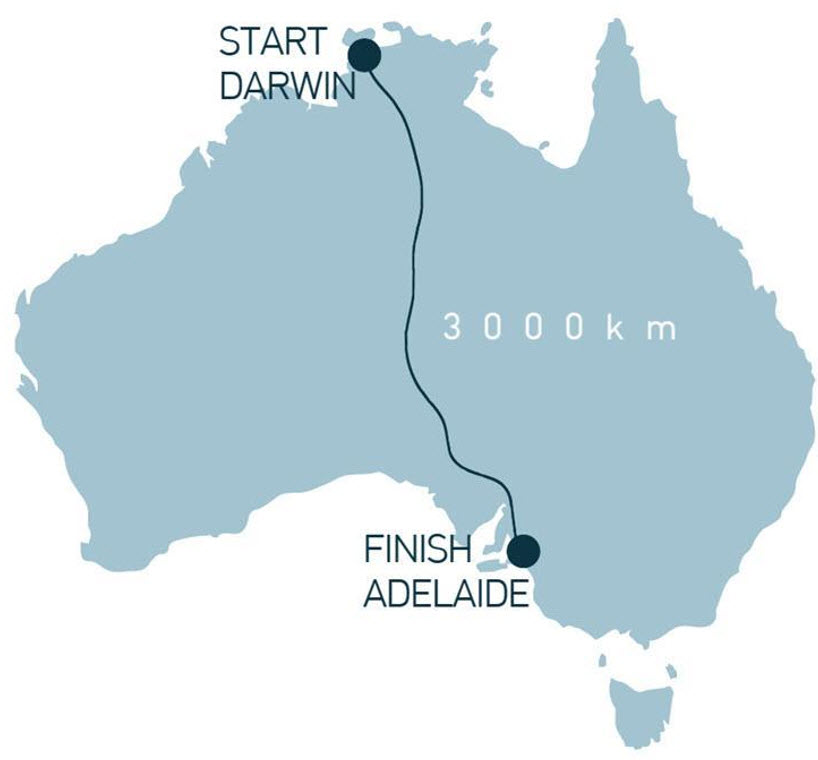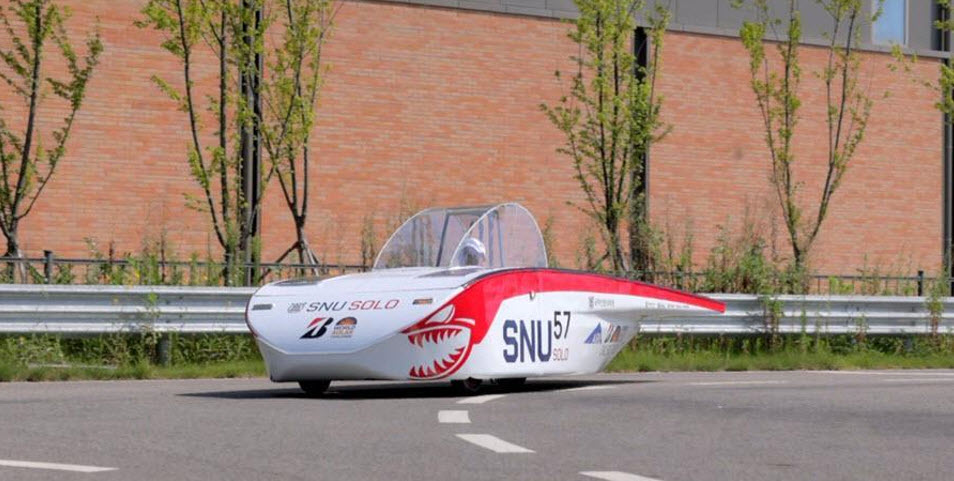
Seoul National University solar car club ‘SNU Solo’ at the Future Mobility Research Center in Siheung Campus
The solar car club of Seoul National University, SNU SOLO, will represent Korea at the 2023 Bridgestone World Solar Challenge in Australia this October. The World Solar Challenge is the biggest world solar car race, with 1,500 participants and an estimated 25 million viewers worldwide. On July 31st, we met with team SNU SOLO as they were making their final preparations for the race.
‘Show our Originality, Leap Over the limits’
SNU SOLO was founded last June with the goal of participating in the World Solar Challenge. The club, which initially began with six members, has now grown to a total of 23 members that compose the three different teams of engineering, design, and business. SNU SOLO's ambition is captured in the team name: "Show our Originality, Leap Over the limits (SOLO)".
"From those who are interested in automobiles and eco-friendly materials to those who don't know anything about the field, the team is united by the 'spirit of challenge,'" said Seo-yeon Jeong, president of SNU SOLO (Department of Materials Science and Engineering).
As a team of all undergraduate students participating in an international competition for the first time, the team has faced challenges every step of the way, the biggest being the securing of the needed budget. Despite the budget and procurement plan they devised at the beginning of the project, in reality, they needed much more money. However, since SNU SOLO was a new club on their first project without an actual car, no one was willing to sponsor them. Things started getting better as they met with representatives of relevant companies, explained their design direction and possibilities, and participated in fairs to get sponsorships.

Meeting sessions and the assembly process to build a solar car (Source: SNU SOLO Instagram @snu_solo)
The design took six months. The team held frequent meetings, often consulted with their advisor, found and read articles and books, and met with seniors working in the automotive industry for advice. Although the modeling results were better than expected in the simulation, the actual assembly process was again limited as they needed a large number of non-standard products, which required additional time and funds to customize. In attempts to reduce costs, they decided to utilize fixtures in the conference room as materials. The frame of the blackboard in the conference room became the frame of their solar automobile.
The World Solar Challenge turns young engineers' imaginations into reality
The World Solar Challenge is a six-day, 3,000-kilometer race from Darwin, the northernmost point of the Australian continent, to Adelaide, the southernmost point, using only solar power, and has been held every two years since its inception in 1987. This event attracts young engineers from around the world who are motivated by the challenge to find the most efficient way to harness solar energy that is necessary to complete the race.
This year's competition will take place from October 22 to 27. The cars can be equipped with lithium-ion batteries of a specified capacity, but once the race begins, they can only be charged by sunlight. Even in rain or windy weather in the desert, it's important to drive reliably and efficiently to get to the finish line. Daily permitted driving hours are from 8 a.m. to 5 p.m. In the remaining time of the day, team members need to eat, sleep, and organize their plans for the race on their own terms.
SNU SOLO is making final checks at the Future Mobility Research Center on Siheung Campus with the goal of finishing. Seven members took a leave of absence from school to fully focus on the competition. They are convinced that while they can always make up for the credits, the experience of representing Korea at the world championships and traveling across the Australian continent is a rare adventure they would not trade for anything.

The map of World Solar Challenge
Hoping to bring magical changes to the world
On July 17, the solar-powered car developed by SNU SOLO took its first test drive, and the students said it felt like a dream come true when the wheels rolled for the first time. They named the car "Goblin,” and just like the magical moment they encountered when Goblin first hit the road, they hope that the car will "bring magical changes to the world.”
The automobile weighs 230 kilograms and measures 4.6 meters long, 1.4 meters wide, 1.3 meters in height, and is shaped like a bullet to reduce air resistance. Energy efficiency is key to the competition, so they designed it with intelligent driving algorithms to control energy. It can run at an average speed of 60 km/h and a top speed of over 80 km/h.

“Goblin” taking a test drive on the track of Siheung Campus
SNU SOLO consists of students from various majors, including Materials Science and Engineering, Liberal Studies, Mechanical Engineering, Economics, Design, and English Education. While it's not always easy to communicate among members with different perspectives, the team is realizing that understanding and reconciling different ideas can lead to better results.
"I wasn't interested in cars at all, and I was originally interested in finance and AI, but I joined SNU SOLO by chance, and now I'm rethinking my career path while preparing for the competition. It's fun to overcome my limitations." said Joo-won Kim, a student from the business team (Department of Liberal Studies). He added that through SNU SOLO, he realized that he had a natural aptitude for understanding technology and explaining it from a business perspective.
For SNU SOLO students, the World Solar Challenge is only the beginning. They plan to continue to prepare for the next competition and other eco-friendly car competitions by learning from the trials and errors they have experienced in preparing for their first entry. In line with the hopes they have in naming their solar-powered car ‘Goblin,’ we hope that the students' challenge will "bring about a magical change in the world.”
Translated by Seulki Yeo
(Department of Russian Language and Literature)
seulkiyeo@snu.ac.kr

